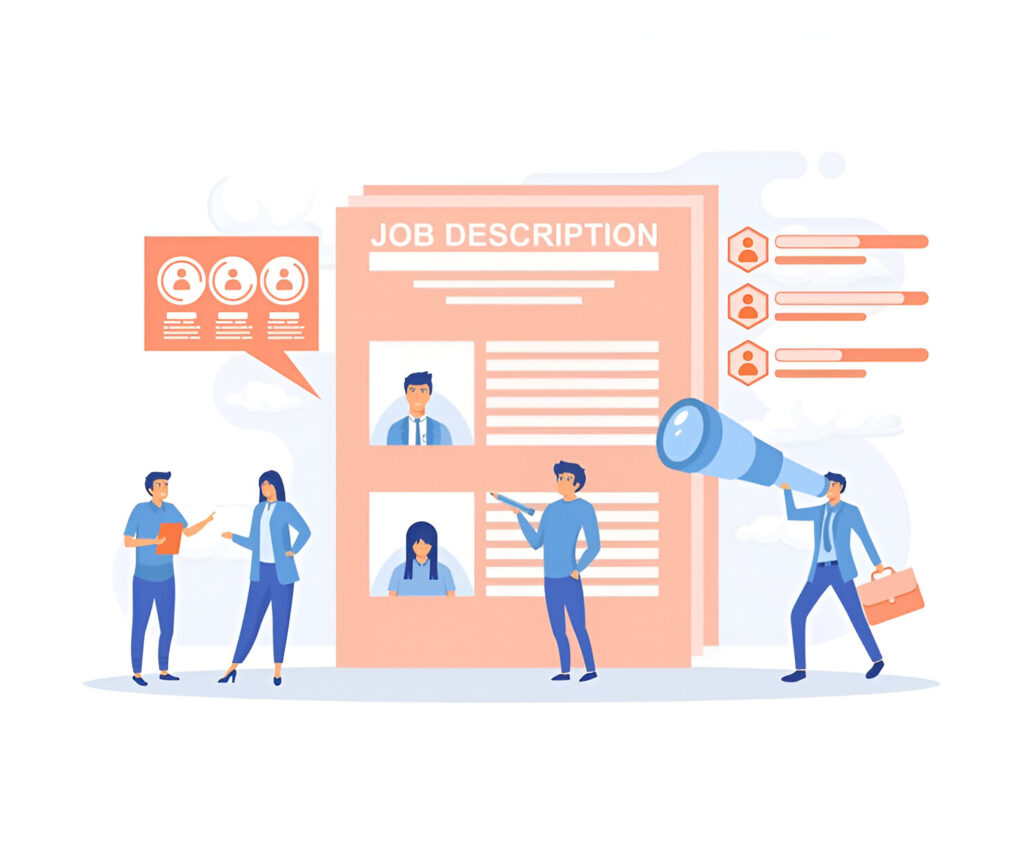Have you ever been excited about a new hire, only to find yourself scratching your head a few months later? We’ve all been there. You interview a candidate who nails every question, aces the hiring assessments, and seems perfect on paper. Fast forward a bit, and you’re wondering if this is the same person you hired. They struggle to communicate with the team, miss deadlines, or just can’t seem to adapt to your company culture.
It’s a common scenario in today’s fast-paced business world. We often focus so intently on technical skills and cognitive abilities during the hiring process that we overlook other crucial factors. Sure, that coding whiz might write beautiful algorithms, but can they explain their work to non-technical stakeholders? Or that marketing guru with the impressive portfolio – how do they handle constructive criticism or tight deadlines?
The truth is, success in most roles isn’t just about what you know – it’s about how you apply that knowledge in real-world situations. It’s about how you interact with others, adapt to challenges, and perform under pressure. Yet many companies, in their rush to fill positions, fail to assess these equally important behavioral traits. This oversight can lead to costly mismatches between seemingly qualified candidates and the actual demands of the job.
The Cost of a Bad Hiring Process
The cost of recruiting, hiring and onboarding a new employee can be as much as $240,000, according to Jörgen Sundberg, CEO of Link Humans, an employer branding agency in London. In a 2012 survey about why companies make bad hires, CareerBuilder found that 43% of respondents said they made a bad hire because they felt they needed to hire someone quickly.

According to the U.S. Department of Labour, the price of a bad hire is at least 30% of the employee’s first-year earnings. For a small company, a five-figure investment in the wrong person is a threat to the business.
Often, candidates with strong cognitive test results can struggle with behavioural elements like emotional intelligence, adaptability, or teamwork, leading to poor job fit and reduced performance. This is where innovative solutions like PerspectAI are making a significant difference. By using a unique game-based assessment platform, PerspectAI offers a holistic evaluation of both cognitive and behavioural skills. Through interactive simulations, it helps identify gaps that traditional tests might miss, offering a real-time, multidimensional view of each candidate.
In this blog, we’ll explore 10 effective ways to identify and address discrepancies in cognitive and behavioural hiring assessments, enabling you to make smarter, data-driven hiring decisions. From understanding why these discrepancies occur to practical strategies for bridging the gap, you’ll gain actionable insights that can transform your recruitment process.
Understanding Cognitive and Behavioural Hiring Assessments
In the hiring process, companies use a variety of tools to assess candidates, with cognitive and behavioural assessments being two of the most common. These assessments are essential for evaluating both a candidate’s technical abilities and their capacity to adapt and thrive in dynamic workplace environments.
Cognitive Assessments: Measuring Mental Agility
Cognitive assessments are designed to measure a candidate’s mental processes—how they think, reason, and solve problems. They typically test skills such as:
- Critical thinking
- Logical reasoning
- Numerical and verbal reasoning
- Memory and information retention
- Pattern recognition
These skills are vital for roles that require analytical thinking, quick decision-making, and complex problem-solving. For example, software engineers or financial analysts often need strong cognitive skills to excel in their roles.
However, cognitive assessments alone don’t paint the full picture. A candidate could have a high aptitude for solving technical problems but struggle in areas that require emotional intelligence, communication, or leadership.

Behavioural and Personality Assessments
Behavioural assessments focus on how candidates act in specific situations, emphasizing traits that determine how they interact with others and navigate the social aspects of a work environment. Common areas measured include:
- Communication skills
- Teamwork and collaboration
- Adaptability and flexibility
- Leadership potential
- Emotional intelligence (EQ)
These assessments aim to predict how a candidate will behave in real-world job scenarios, especially in roles where working with others is key, such as customer service, management, or sales positions. A candidate may have excellent technical skills, but without strong behavioral traits like adaptability or the ability to work under pressure, they might not succeed in collaborative or leadership roles.
Why Discrepancies Occur in Hiring Assessments
Discrepancies between cognitive and behavioural assessments can happen for several reasons:
- Different Strengths in Varied Situations: A candidate may excel in cognitive skills like problem-solving but struggle with interpersonal skills, or vice versa, leading to performance gaps in real-world scenarios.
- Stress and Pressure: Cognitive assessments are often conducted in low-pressure environments, while real-world tasks may require candidates to perform under stress, revealing inconsistencies.
- Bias in Self-Reporting: Behavioural assessments often rely on self-reports, which can lead to candidates misrepresenting their abilities. A recent ResumeLab survey found that 70% of workers lie on resumes, with the largest percentage—37%—saying they lie frequently.
- Job Role Mismatches: Some roles require a balance of cognitive and behavioral skills. Discrepancies arise when candidates are strong in one area but lack the traits needed for the full scope of the role.
- Inconsistent Evaluation: Traditional assessments may fail to measure cognitive and behavioral skills together, making it difficult to predict real-world performance.
10 Ways to Overcome Discrepancies in Hiring Assessments
Identifying discrepancies between cognitive and behavioural hiring assessments helps ensure that you are hiring candidates who perform well not only in technical tasks but also in team settings and real-world situations. Here are 10 ways to spot these gaps:
1. Assess Adaptability in Dynamic Situations
Some candidates shine in controlled testing environments but falter when placed under stress. Look for discrepancies by evaluating how well they apply their cognitive skills during high-pressure, time-sensitive tasks. For example, a candidate who performs well in logical reasoning tests but struggles to make quick decisions in stressful scenarios may reveal a gap in their ability to handle workplace pressures.
2. Analyse Test Consistency Across Multiple Assessments
Consistency is key when evaluating both cognitive and behavioural traits. Assess how a candidate performs across different tests and scenarios:
- Variability in Scores: A candidate with fluctuating scores in cognitive or behavioural assessments may struggle with adaptability or focus.
- Comparing Short-Term vs. Long-Term Performance: Does the candidate perform consistently over time, or do their results vary dramatically between different stages?
- Game-Based Results: Using platforms like PerspectAI, you can track consistency across cognitive tasks and real-world behavioural simulations, identifying potential gaps more effectively.
3. Look for Job Role Misalignment
Sometimes, a candidate may score highly in cognitive assessments but lack the behavioural traits required for the role.
For example, a software engineer might excel in logical reasoning but struggle with teamwork or leadership in collaborative environments. Ensure that the role’s demands align with the candidate’s full range of skills.

4. Identify Bias in Self-Reporting
Traditional behavioural assessments often rely on self-reporting, which can lead to biased results. Candidates may overestimate their abilities in areas like emotional intelligence or adaptability. Cross-check self-reported behavioral data with objective cognitive test results and feedback from real-world simulations to uncover discrepancies.
5. Assess Performance in Task-Specific Scenarios
Breaking down a candidate’s performance into specific tasks can reveal gaps between cognitive ability and behavioural response. For example, a candidate might excel in solving technical problems but show poor communication skills when explaining solutions to a team. Situational judgement tests and real-life simulations allow you to assess candidates in task-specific, simulated environments.
6. Use Simulations for Real-World Scenarios
Simulations and game-based assessments are powerful tools for identifying discrepancies because they replicate real-world job conditions. Here’s how:
- Behaviour Under Stress: Simulations test both cognitive and behaviuoral performance under stress, revealing gaps in decision-making and adaptability.
- Real-Time Decision-Making: Candidates must apply both technical knowledge and interpersonal skills in simulations, showing whether they can bridge the gap between thinking and acting.
7. Monitor Improvement Over Time
Continuous testing helps identify long-term discrepancies:
- Tracking Growth: Over time, candidates may improve their cognitive skills but stagnate behaviourally. Regular performance reviews can reveal this gap in hiring assessments
- Learning Agility: Look for candidates who show progress in both areas. Are they learning from past mistakes in both cognitive tasks and behavioural challenges?
- Monitor Employee Development: Use platforms that help you monitor candidates’ development in real-time, making it easier to spot any gaps in their cognitive and behavioural growth.
8. Incorporate External Feedback
Relying solely on assessment results can miss important gaps. Gathering feedback from previous employers, colleagues, or internship supervisors can provide insights that assessments alone may not catch:
- Behaviour in Real Work Environments: Feedback can reveal whether a candidate who performed well in cognitive hiring assessments struggled in team settings or failed to meet behavioural expectations.
- Comparing Feedback with Assessment Data: Cross-reference feedback with assessment results to see if there are any notable discrepancies, particularly in areas like teamwork or emotional intelligence.
- Holistic Evaluation: Use a combination of internal test results and external reviews to ensure a well-rounded view of the candidate’s capabilities.
9. Evaluate Cultural Fit and Adaptability
Cognitive and behavioural assessments may miss key traits like cultural fit and adaptability. A candidate might have the technical and interpersonal skills for a role, but if their behavioural traits clash with the company culture, they may struggle to integrate. Ensure you assess for both skill and cultural fit to avoid these discrepancies.
10. Measure Emotional Intelligence (EQ) vs. Cognitive Intelligence (IQ)
Emotional intelligence (EQ) and cognitive intelligence (IQ) are two distinct attributes that need to be balanced in many roles, especially in leadership and management:
- IQ vs. EQ: High cognitive intelligence (IQ) may not translate into strong emotional intelligence (EQ). For example, a candidate may excel in data analysis but struggle with empathy or managing team dynamics.
- Critical for Leadership: Leadership roles require both strong cognitive and emotional skills. Candidates with high IQs but low EQs might struggle to motivate teams or resolve conflicts.
By implementing these ten strategies, you can significantly reduce discrepancies in your hiring assessments and make more informed decisions. Remember, the goal isn’t to find perfect candidates, but to identify those who possess both the skills and the adaptability to thrive in your unique organizational culture. As you fine-tune your approach, you’ll not only improve the accuracy of your hiring decisions but also enhance the overall candidate experience.
Ultimately, by bridging the gap between cognitive and behavioural assessments, you’ll build stronger, more cohesive teams that drive your company’s success in an ever-evolving business landscape.
Hire smarter with PerspectAI – where cognitive brilliance meets behavioural excellence.